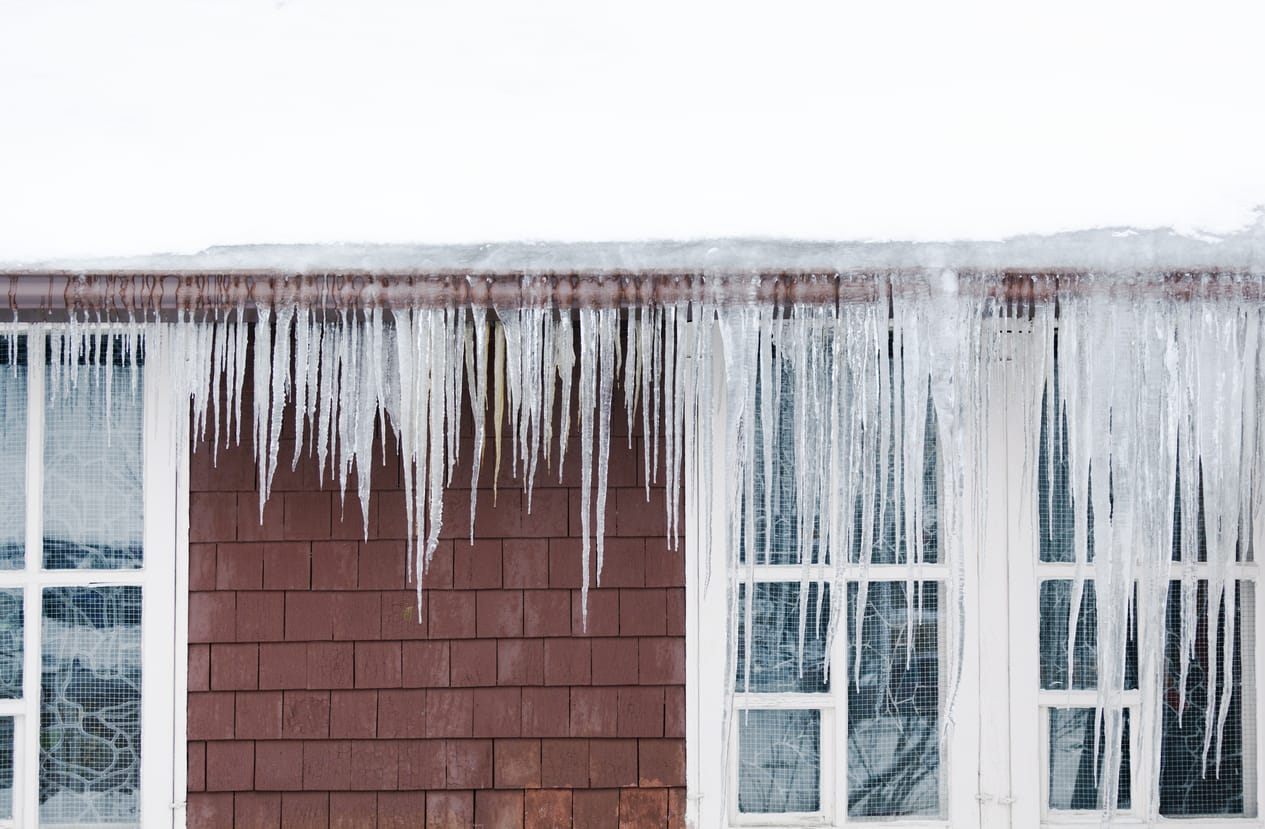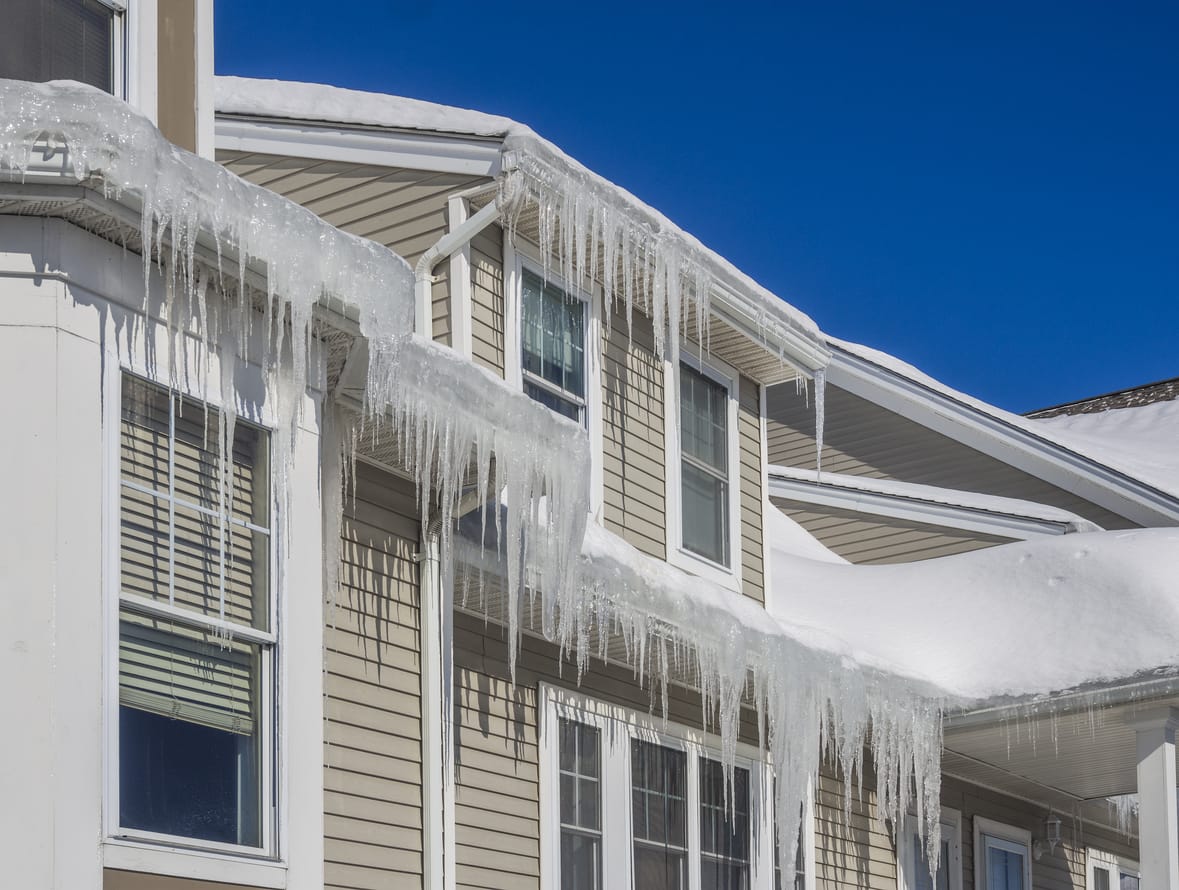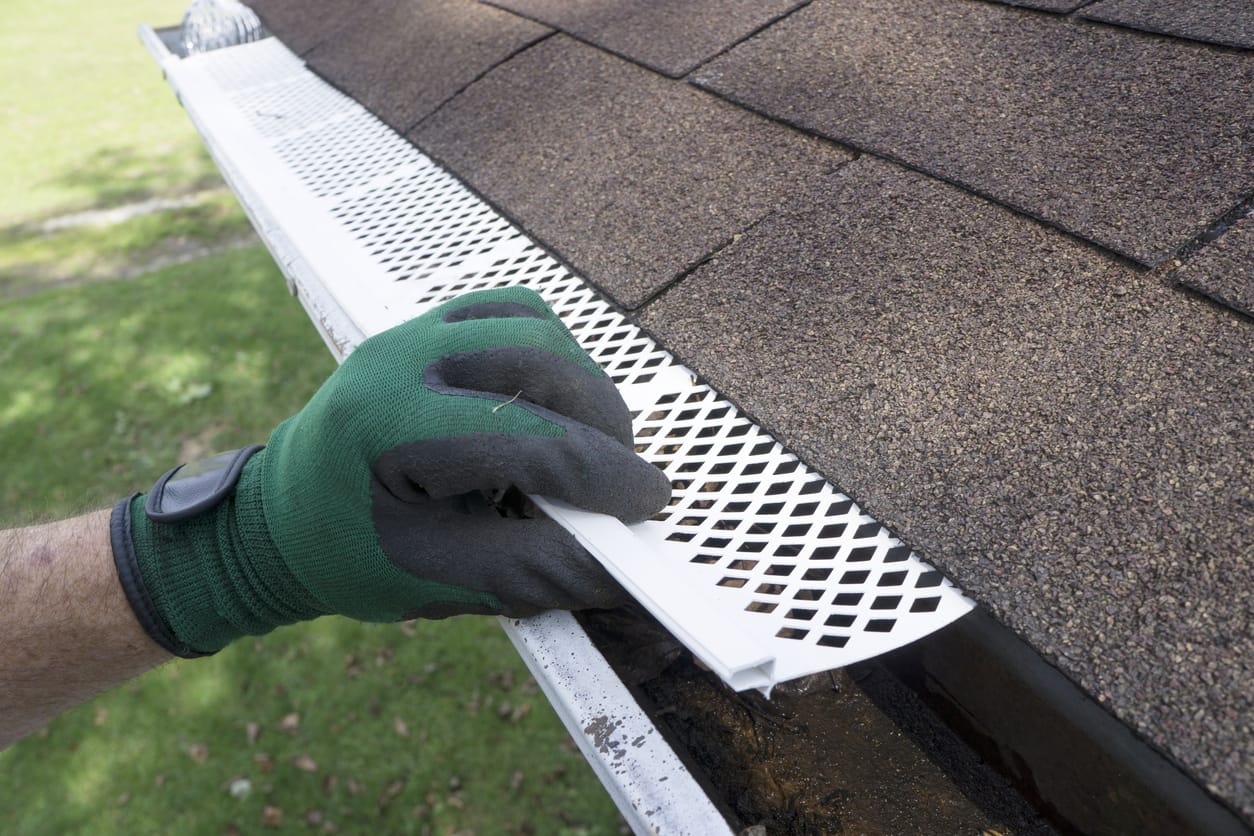Gutter Protection: Prevent Ice And Snow Damage This Winter
With winter comes all kinds of home issues that you have to watch out for. Burst pipes, cold temperatures indoors and icy paths are all common problems homeowners face. However, many don’t think about their gutters, and how they cope in this cold weather. Without proper gutter protection, ice and snow can wreak havoc with your gutters, creating bigger problems later down the line for you.
Here’s what you should be looking out for, and how you can prevent the weather from damaging your gutters with these steps for gutter protection.
The Damage Snow And Ice Can Do Without Gutter Protection
So, what happens to your gutters when the snow and ice sets in and you do not have any gutter protection? In short, they can cause havoc by stopping your gutters from doing their job. There’s two different ways that your gutters can end up damaged.
The first issue is that of ice build up. Sometimes, ice can build up in your gutters faster than it can melt and flow out as intended. When this happens, the ice on the top of the build up will eventually melt, but flow over the lip of the gutter. This can create long icicles that hang from the gutters. The weight of the icicles can put pressure on your gutters, and can even crack or break them.
Secondly, snow melting off your roof into the gutters can be a problem. Snow can melt off the roof even when it’s still cold outside, thanks the heat from your home coming through the roof itself. The snow melts off into the gutters, where it then refreezes into an ice dam. That dam will melt over time, and thanks to the overflow it can seep under tiles and tar paper. These ice dams can create issues with your roof that can be costly to fix.
Ice And Snow Are Dangerous To Your Roof
Your gutters have an important part to play in keeping your roof safe and fit for purpose. Because of this, it’s incredibly important to have proper gutter protection, especially during the winter months. When they’re not able to perform their intended function, it can be a real problem for you as a homeowner.
The problem with ice and snow is that it melts, and that’s when it gets into your roof and causes the problems that can be costly to you later on. Water in your roof is dangerous, as when it gets into the exposed timbers it can cause rot and mold, which can greatly damage the structural integrity of your roof itself.
If the snow and ice is melting into your roof, then it may not have anywhere else to go, meaning you’ll be seeing these problems sooner rather than later.
How To Prevent Snow And Ice Damage With Gutter Protection
The first step of gutter protection to avoid snow and ice damage is to inspect your gutters. Before the cold season sets in and after all the leaves have fallen, get a ladder and have a close look at your gutters.
Ice dams can form because debris in the gutters block the water from passing through, meaning it has nowhere to go. Take this time to clean the gutters out thoroughly, ensuring that nothing is stuck in them before temperatures drop and snow falls. If you do this, you’re greatly reducing the risk of ice dams forming.
Your gutter protection can go one further by installing gutter guards that will stop debris falling in. These often look like mesh guards, or brushes, that catch leaves and other debris before they fall into the gutter. You’ll still have to clean them out periodically, but they’ll stop the blockages happening and prevent the ice dams from forming.
You can also look into more permanent solutions, such as heating systems. These are heating elements that are installed in your guttering, which then keep water above freezing temperatures. This ensures that the water keeps flowing and stops freezing from happening. Snow guard systems are also another way to prevent snow from flowing into your gutters to begin with.
Another gutter protection solution, if you’re finding that ice and icicles are pulling your guttering down, is to reinforce your guttering. There are many roofing companies that can do this for you. They’ll increase the weight load capacity of the gutters, meaning if ice does form you can ensure that your guttering will stay put.
Prepare Your Roof For Winter
Your roof is at risk during the snowy weather, and it can contribute to problems with your guttering. That’s why you should ensure gutter protection, and also look into preparing your roof before the cold weather really sets in.
The first thing you’ll need to do is ensure that there’s no existing water damage to the roof. Again, grab a ladder and take a look at the outside of the roof. If any tiles are lifting up or curled, that could be a sign of damage that you’ll need to address. Get into the attic, and take a look at the wood in here. If there’s any mold or mildew, you’ll need to address this, too.
Insulating your roof should also be included in your gutter protection plan. This is because it is a great way of stopping snow melting off it and into your gutters. If you find that you’re losing heat through the roof, insulating it will stop this from happening, and keep it safe from damage. As an added bonus, you’ll also save a lot of money on your energy bills, as you won’t need to keep your home heated as much.
One option, which is worth considering if you’re getting a whole new roof, is having a water and ice membrane fitted. This is a big job, so you’ll probably need to wait until the whole roof needs to be replaced. However, it’s well worth doing as it’s one of the best and most effective ways of keeping water out of your roof itself.
Conclusion
As you can see, there’s a lot of ways you can keep water flowing through your gutters, rather than letting ice build up and create more problems later on. It’s all about the gutter protection. Even if you’re just checking your gutters regularly and clearing any blockages you find, then you’ll be able to stop most damage in its tracks. Taking more permanent measures, though, will ensure that you’ll never have to worry about your gutters again.



